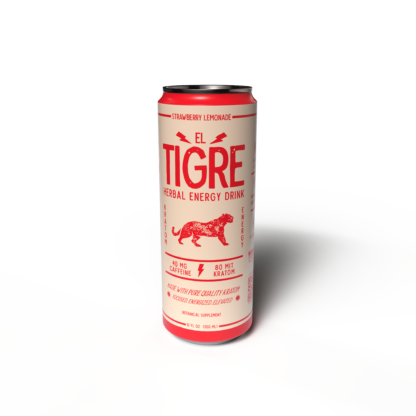The Effects of Kratom on Metabolism
Kratom, a tropical tree native to Southeast Asia, has gained popularity as an alternative remedy for pain and fatigue. Its effects are attributed to alkaloids like mitragynine, which interact with opioid receptors in the brain. Recent years have witnessed a surge in kratom-infused energy drinks, capitalizing on its purported energizing properties. However, the impact of kratom on metabolism remains a subject of ongoing research. Understanding how these beverages influence metabolic rate is crucial for assessing their potential benefits and risks.
Stimulating Metabolic Rate
While some users report feeling energized after consuming kratom-based energy drinks, scientific evidence regarding its direct effect on stimulating metabolic rate is limited. Kratom’s primary alkaloids, mitragynine and 7-hydroxymitragynine, are known to interact with opioid receptors in the brain, primarily associated with pain modulation and mood regulation. These mechanisms don’t directly translate to a measurable increase in metabolic processes like calorie expenditure or thermogenesis.
Furthermore, the energy boost experienced by some users may be attributed to other ingredients found in kratom-infused energy drinks, such as caffeine or guarana. These stimulants can indeed elevate metabolic rate and provide temporary energy. Therefore, it’s crucial to differentiate between the potential effects of kratom itself and those of added ingredients when evaluating its impact on metabolism.
More research is needed to fully understand the complex interactions between kratom, its alkaloids, and metabolic processes. Until then, consumers should approach kratom-based energy drinks with caution and be aware that their energizing effects might primarily stem from other ingredients.
Influence on Enzyme Activity
Kratom’s influence on metabolism is a complex area of study with limited concrete evidence. While some individuals report feeling energized after consuming kratom-infused beverages, the direct impact of kratom alkaloids on metabolic rate remains unclear. Mitragynine and 7-hydroxymitragynine, the primary alkaloids in kratom, primarily interact with opioid receptors in the brain, influencing pain modulation and mood rather than directly stimulating metabolic processes like calorie expenditure or thermogenesis.
It’s important to note that kratom-based energy drinks often contain additional stimulants like caffeine or guarana, which are known to increase metabolic rate and provide a temporary energy boost. Therefore, the perceived energizing effects might be primarily attributed to these added ingredients rather than kratom itself.
Further research is necessary to elucidate the precise mechanisms by which kratom interacts with the body’s metabolic processes. Until more conclusive evidence emerges, consumers should approach kratom-infused beverages with caution and be mindful that their energizing effects may stem largely from other ingredients.
Thermogenesis and Energy Expenditure
Kratom’s influence on metabolism is a complex area of study with limited concrete evidence. While some individuals report feeling energized after consuming kratom-infused beverages, the direct impact of kratom alkaloids on metabolic rate remains unclear. Mitragynine and 7-hydroxymitragynine, the primary alkaloids in kratom, primarily interact with opioid receptors in the brain, influencing pain modulation and mood rather than directly stimulating metabolic processes like calorie expenditure or thermogenesis.
It’s important to note that kratom-based energy drinks often contain additional stimulants like caffeine or guarana, which are known to increase metabolic rate and provide a temporary energy boost. Therefore, the perceived energizing effects might be primarily attributed to these added ingredients rather than kratom itself.
Further research is necessary to elucidate the precise mechanisms by which kratom interacts with the body’s metabolic processes. Until more conclusive evidence emerges, consumers should approach kratom-infused beverages with caution and be mindful that their energizing effects may stem largely from other ingredients.
Kratom Energy Drinks: A Potential Concern?
Kratom energy drinks have gained popularity due to Kratom’s purported energizing effects. However, the actual impact of kratom on metabolic rate remains unclear. While some users report feeling energized after consuming these beverages, scientific evidence directly linking kratom alkaloids to an increase in metabolic processes like calorie expenditure or thermogenesis is limited.
Increased Caffeine Consumption
Kratom’s primary alkaloids, mitragynine and 7-hydroxymitragynine, primarily interact with opioid receptors in the brain, influencing pain modulation and mood regulation. These mechanisms don’t directly translate to a measurable increase in metabolic processes like calorie expenditure or thermogenesis.
It is important to note that kratom-based energy drinks often contain additional stimulants such as caffeine or guarana. These substances are known to elevate metabolic rate and provide a temporary energy boost, which may contribute to the perceived energizing effects of these beverages.
More research is needed to fully understand the complex interactions between kratom, its alkaloids, and metabolic processes.
Synergistic Effects with Kratom

The potential impact of Kratom on metabolic rate remains an area of ongoing investigation. While some individuals report feeling energized after consuming Kratom-infused energy drinks, the direct effect of Kratom alkaloids on metabolic processes is not yet fully understood.

Kratom’s primary alkaloids, mitragynine and 7-hydroxymitragynine, primarily interact with opioid receptors in the brain, influencing pain modulation and mood regulation. These mechanisms do not directly translate to a measurable increase in metabolic processes like calorie expenditure or thermogenesis.
It is important to consider that Kratom energy drinks often contain additional stimulants, such as caffeine or guarana, which are known to elevate metabolic rate and provide a temporary energy boost. Therefore, the perceived energizing effects may be primarily attributed to these added ingredients rather than Kratom itself.
Further research is needed to elucidate the complex interplay between Kratom, its alkaloids, and metabolic processes. Until more conclusive evidence emerges, consumers should approach Kratom-infused beverages with caution and be mindful that their energizing effects may stem largely from other ingredients.
Potential for Metabolic Dysregulation
Kratom energy drinks have gained popularity due to Kratom’s purported energizing effects. However, the actual impact of kratom on metabolic rate remains unclear. While some users report feeling energized after consuming these beverages, scientific evidence directly linking kratom alkaloids to an increase in metabolic processes like calorie expenditure or thermogenesis is limited.
Kratom’s primary alkaloids, mitragynine and 7-hydroxymitragynine, primarily interact with opioid receptors in the brain, influencing pain modulation and mood regulation. These mechanisms don’t directly translate to a measurable increase in metabolic processes like calorie expenditure or thermogenesis.
It is important to note that kratom-based energy drinks often contain additional stimulants such as caffeine or guarana. These substances are known to elevate metabolic rate and provide a temporary energy boost, which may contribute to the perceived energizing effects of these beverages.
More research is needed to fully understand the complex interactions between kratom, its alkaloids, and metabolic processes.
Metabolic Considerations for Consumers
Kratom energy drinks have gained popularity due to Kratom’s purported energizing effects. However, the actual impact of kratom on metabolic rate remains unclear. While some users report feeling energized after consuming these beverages, scientific evidence directly linking kratom alkaloids to an increase in metabolic processes like calorie expenditure or thermogenesis is limited.
Kratom’s primary alkaloids, mitragynine and 7-hydroxymitragynine, primarily interact with opioid receptors in the brain, influencing pain modulation and mood regulation. These mechanisms don’t directly translate to a measurable increase in metabolic processes like calorie expenditure or thermogenesis.
It is important to note that kratom-based energy drinks often contain additional stimulants such as caffeine or guarana. These substances are known to elevate metabolic rate and provide a temporary energy boost, which may contribute to the perceived energizing effects of these beverages.
More research is needed to fully understand the complex interactions between kratom, its alkaloids, and metabolic processes.
Individual Variability in Response
Kratom’s influence on metabolism is a complex area with limited concrete evidence. While some individuals report feeling energized after consuming kratom-infused beverages, the direct impact of kratom alkaloids on metabolic rate remains unclear. Mitragynine and 7-hydroxymitragynine, the primary alkaloids in kratom, primarily interact with opioid receptors in the brain, influencing pain modulation and mood regulation. These mechanisms don’t directly translate to a measurable increase in metabolic processes like calorie expenditure or thermogenesis.
It’s crucial to consider that kratom-based energy drinks often contain additional stimulants like caffeine or guarana. These substances are known to elevate metabolic rate and provide a temporary energy boost, which may contribute to the perceived energizing effects of these beverages. Therefore, it is important to differentiate between the potential effects of kratom itself and those of added ingredients when evaluating its impact on metabolism.
More research is needed to fully understand the complex interactions between kratom, its alkaloids, and metabolic processes. Until more conclusive evidence emerges, consumers should approach kratom-infused beverages with caution and be mindful that their energizing effects may stem largely from other ingredients.
Dosage and Frequency of Consumption
Kratom’s influence on metabolism is a complex area of study with limited concrete evidence. While some individuals report feeling energized after consuming kratom-infused beverages, the direct impact of kratom alkaloids on metabolic rate remains unclear. Mitragynine and 7-hydroxymitragynine, the primary alkaloids in kratom, primarily interact with opioid receptors in the brain, influencing pain modulation and mood regulation. These mechanisms don’t directly translate to a measurable increase in metabolic processes like calorie expenditure or thermogenesis.
It is important to note that kratom-based energy drinks often contain additional stimulants such as caffeine or guarana. These substances are known to elevate metabolic rate and provide a temporary energy boost, which may contribute to the perceived energizing effects of these beverages.
Further research is needed to fully understand the complex interplay between kratom, its alkaloids, and metabolic processes. Until more conclusive evidence emerges, consumers should approach kratom-infused beverages with caution and be mindful that their energizing effects may stem largely from other ingredients.
Underlying Health Conditions
The impact of kratom on metabolism is a topic under investigation, and current scientific evidence is limited. While some users report feeling energized after consuming kratom-based energy drinks, the direct effect of kratom alkaloids on metabolic rate remains unclear. Mitragynine and 7-hydroxymitragynine, the primary alkaloids in kratom, primarily interact with opioid receptors in the brain, influencing pain modulation and mood regulation rather than directly stimulating metabolic processes.
It’s important to note that kratom energy drinks often contain additional stimulants like caffeine or guarana. These substances are known to elevate metabolic rate and provide a temporary energy boost, which may contribute to the perceived energizing effects of these beverages. Therefore, it is crucial to differentiate between the potential effects of kratom itself and those of added ingredients when assessing its impact on metabolism.
Further research is necessary to fully understand the complex interactions between kratom, its alkaloids, and metabolic processes. Until more conclusive evidence emerges, consumers should approach kratom-infused beverages with caution and be aware that their energizing effects may stem largely from other ingredients.
Order Kratom energy beverages now
One One Three Online
Stand Seven
- Can Filler Dissolving Treatment Correct Overfilled Lips - June 15, 2025
- The Shelf Life Of Kratom Gold Shots: Tips To Keep Them Fresh - June 14, 2025
- What To Look For When Buying THC Drinks - June 13, 2025
